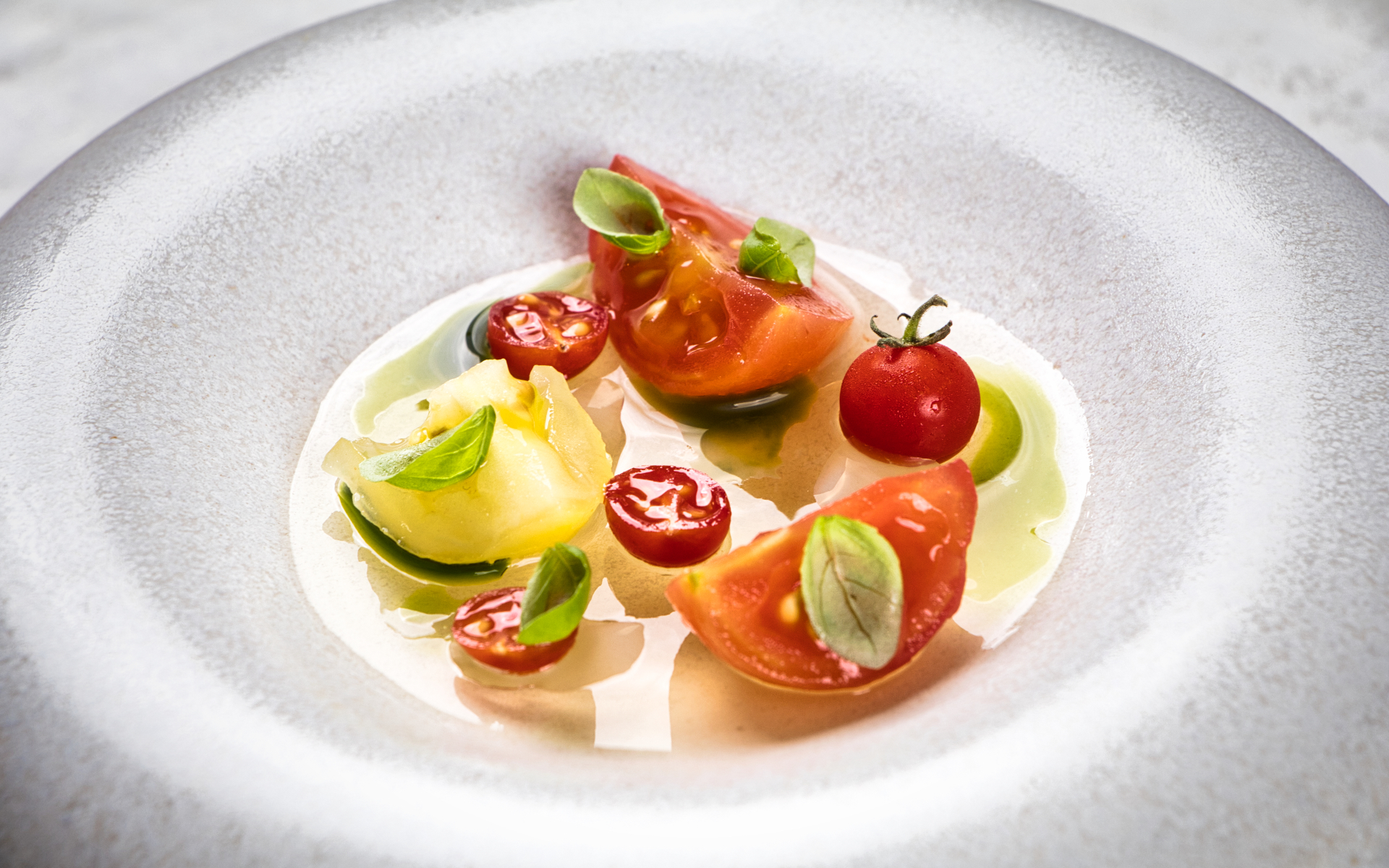One can sense the almost palpable energy emanating from the kitchens of Tippling Club through a Zoom call even as it is conducted during partial lockdown. The Fine Young Cannibals groovy beats chime in the background as Chef Ryan Clift and his head chef Ayo Adeyemi take their hot seats in the ‘interview room’.
The duo, dressed in their well-fitted chefs uniform look super chilled, unfazed by the pre-service preparations that await their supervision. Perhaps it’s in the knowledge that their multi-course dinner menu had been optimised during its tenancy on the more experimental but temporal lunch menu, or perhaps it is the ultimate faith placed on their kitchen brigade; either way, their casual disposition is infectious and it puts me at ease.
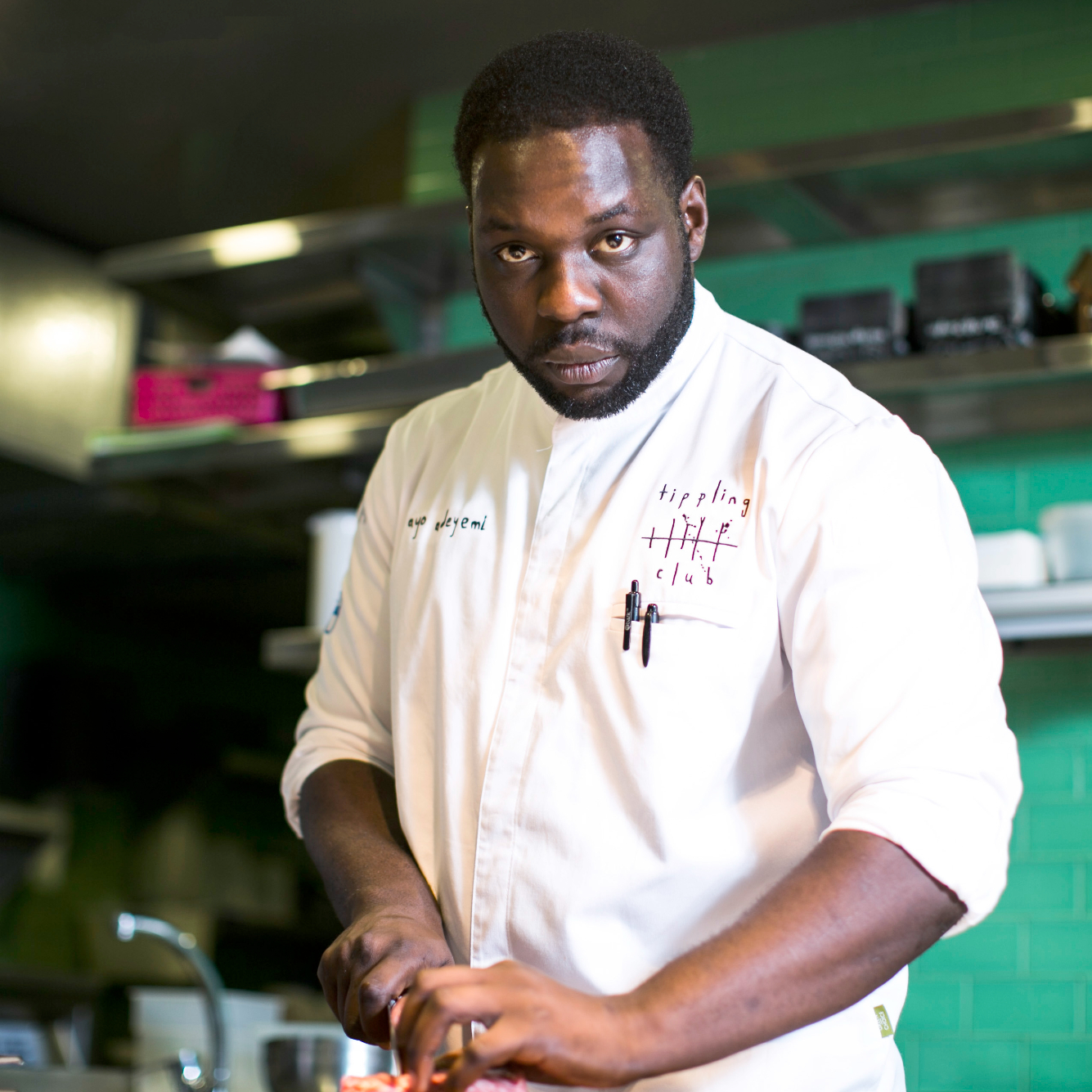
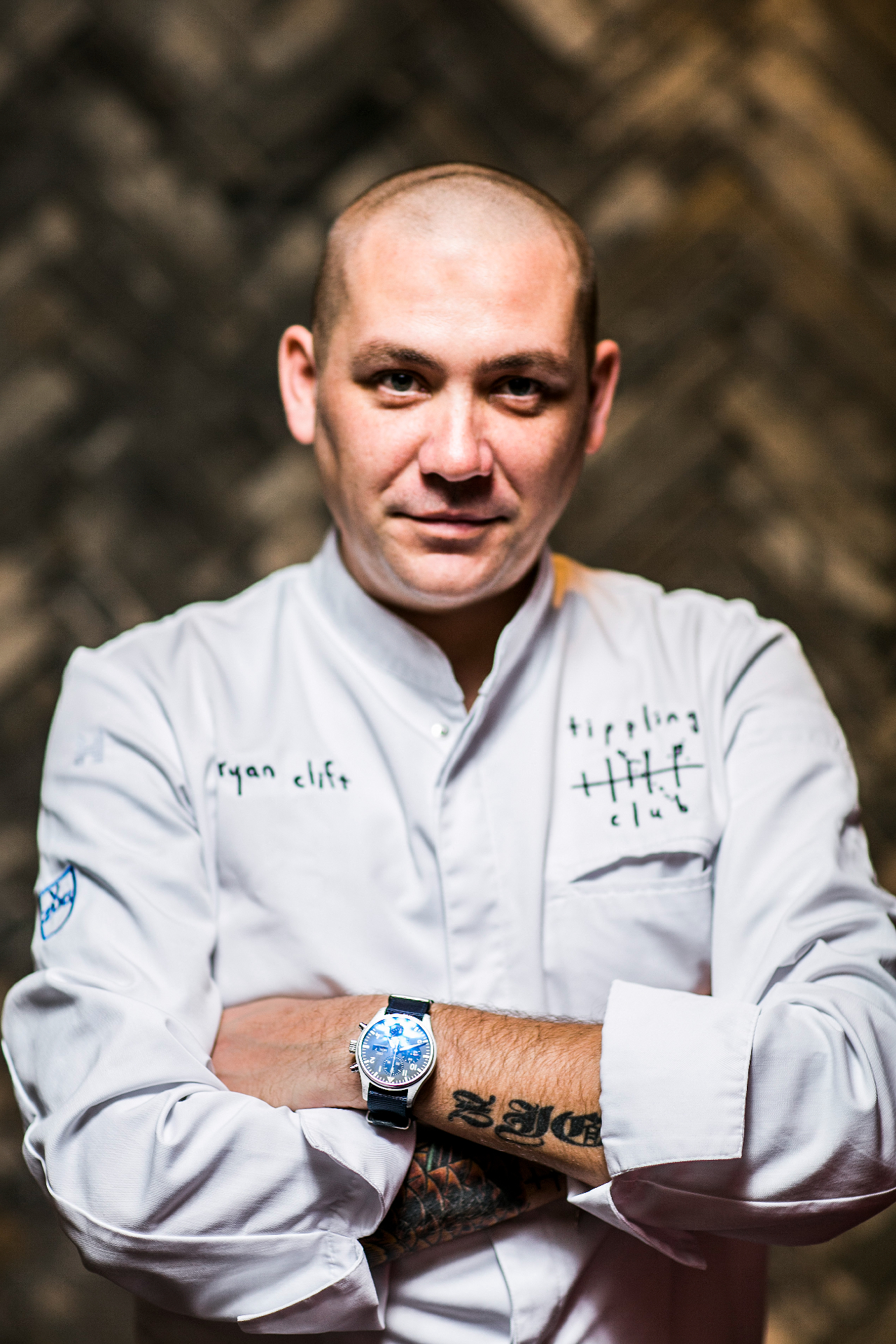
Tell us more about the mind-mapping process which focuses on a key ingredient and how that connects to Tippling Club’s ethos?
RYAN: Fourteen years ago when we started Tippling Club, I used to write down elaborate ingredients and list down concepts and techniques. The very first one I did was a listing for foie gras, and that basically became the Tippling logo.
I started by writing foie gras and drew a straight line. The straight line represents the timeline. Each line that comes down subsequently after that represents the ingredient that it matches. Once I have the ingredients, I draw a line down and list the concept applied.
For example when I say apple, the first thing that comes to mind is fresh fruit, hence I write ‘Fresh’ – that essentially means I would serve a piece of fresh raw apple. After that, I would write ‘Cooked’ – poached, candied, freeze dry, dehydrated, sorbet, fluid, powder, ice cream, and you just keep lengthening that list. At this point, there can be 22-25 methods that you can process an apple. It ends up like a line map.
Do you keep these drawings compiled somewhere?
RYAN: As the business grew, the collection of maps grew as well. We were constantly referring to my ‘bible of maps’ and eventually it became the logo of the restaurant. Right now, I have it in my home but I do have plans to put it in a book one day. Mark my words.
How do you get in the flow with this creative process?
RYAN: It is always Chef Ayo and myself that brainstorm this together. Chef comes to me with new produce and his ideas and from there I will start the mind-mapping process. He is actually the main creative behind the sourcing of the new produce since he is dedicated to understanding seasonality; what’s new, what’s interesting, what’s now become available in the market.
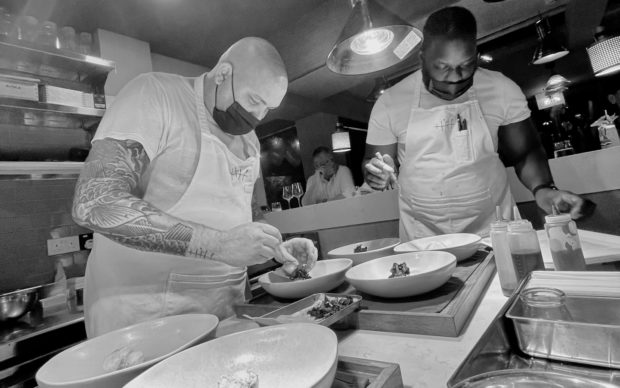
Speaking of sourcing produce, Chef Ayo, what is the one food ingredient that you’re obsessed with cooking?
AYO: There are many at the moment, but if I have to list one in particular, it would be this ingredient that we currently use as an umami booster, shio koji. It is the salted product of koji, it can be used for seasoning, but in Tippling Club, we use it as an umami booster for a lot of our dishes. One of our signature dishes on our menu is the garlic soup which has been on the menu since day one, we employ shio koji to boost its flavour. We have been very creative in using it for our lunch and dinner menu.
We’re particularly proud of our shio koji aged beef that we source from Australia. We begin by first coating the beef with shio koji, allowing it to marinade overnight, before washing it off, patting dry and roasting it. Essentially, what that does is to invoke a similar result to dry-ageing. We serve it with very simple garnishes and clean flavours. For us, it is more about the process. and what shio koji does to the meat that we are trying to spotlight.
Can you explain to us how using shio koji is different from dry-ageing?
RYAN: Most restaurants will have meat cabinets where they hang and dry-age their meats for 10 to 12 weeks, 16 weeks, 100 days, 200 days, all of this long-winded (blah blah) process. By rubbing the shio koji on the beef, we can achieve the same flavour in just three days, which usually takes 12 weeks. This just adds an insanely amazing profile to the meat, especially wagyu that tends to have less inherent flavour.
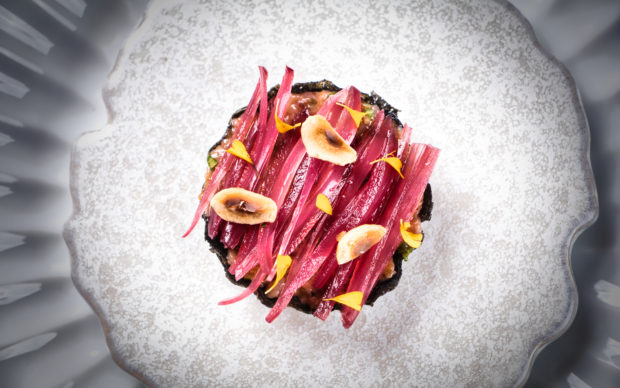
That is what we are about, we’re never about fluff, we’re about flavour. How our dish looks is often the last concept applied to its presentation, we prefer to focus on the intricacies of textures, temperatures and flavours.
Congratulations on the re-entry of the bar into the World’s 50 Best 2021. As one of the founders of the cocktail scene in Singapore, how does it feel to have come such a long way?
RYAN: We are very happy. We’ve never really dropped off the list. I think it’s a testament to what Andy Loudon and his second bartender, Arathorn are doing. They have worked really hard to fill the shoes that Joe Schofield had left. In fact, most of my bar alumni currently run businesses around the world and are doing very well for themselves. Tippling Club has become a breeding ground for really good industry professionals.
The 50 Best Bars list has been changing in such a manner that new brands and names get more exposure, and I think it is only fair that they are given such an opportunity. That being said, it’s very rare in 50 Best standards, that you come off the list and then you get back in because there is an influx of new bars opening, excelling and doing well. Hence, it is incredibly rewarding for us to be back on the list. Our new menu is launching in August this year and it will be interactive.
*Following Joe Schofield’s tenure at Tippling Club, he continues to work with Ryan Clift on their consultancy company, Sensorium. He also currently serves as the creative director of Asterley Bros and is the co-owner of Schofield’s Bar and Atomeca, both based in his home city of Manchester.
How have the consumerism habits of Singaporean diners changed over the last decade?
RYAN: From the perspective of the bar and the kitchen, Singaporean’s palates have definitely changed.
Nowadays, the younger generation really embrace cocktail culture and these are just the normal orders you would get. Sure, you can say that we pioneered the cocktail culture in Singapore, for back in 2008, there were only a couple of hotel bars and Raffles Bar. We stuck to our guns, championing a 12 cocktail list that is avant-garde with amazing garnishes and cool concepts.
Our current guests now appreciate good classic cocktails that may be a tad harsh; whereas in the past, this was deemed unfathomable.
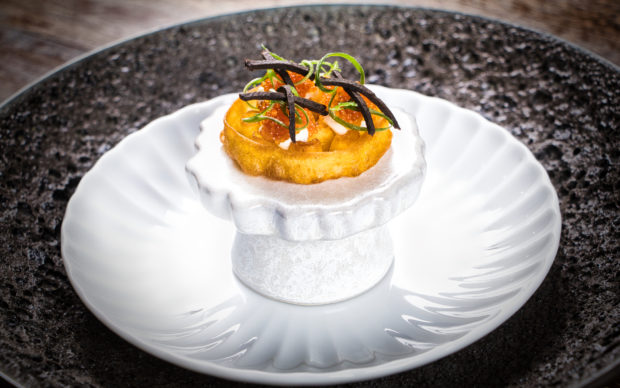
Food-wise, I was always classed as ‘weird’ and ‘molecular’ and I hate that word. We’ve evolved over the years, we’ve become more humble, more produce-driven even though our cuisine still remains very technical.
Lastly, people’s perception of prices have changed, I remember in the start, people used to think we’re expensive but we’re in no way expensive when compared with other restaurants. What we champion is experience. Singaporeans are a tough nut to crack and I can safely say that 14 years is a testament to how many nuts we’ve been able to crack.
Is the kitchen very involved in helping out with the cocktail garnishes?
Absolutely. When a menu is created, Andy and Arathon will approach Chef Ryan and myself and ask for ideas. At this stage, they give us the base flavours, the name and concept of the drinks, which might then serve to inspire the garnish. From there, we have our combined 45 years of culinary knowledge, all that experience of pastry and culinary to assist us in conceptualising the garnish.
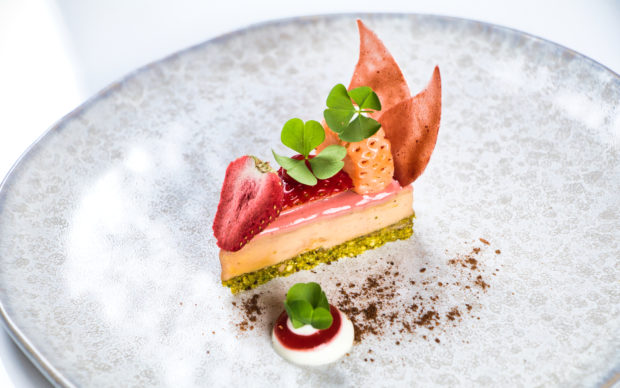
What’s the number one rule in your kitchen?
RYAN: Shake my hand when you walk into my kitchen in the morning or else you’re going to have a very long day. It is simple manners really.
You have 45 years of combined cooking experience. That’s a long time. Was there anything that you thought you wanted to do before you embarked on your cooking career?
RYAN: I was 14 when I started. I had left school early because I wasn’t cut out for it and was considered to be quite a rebel. However, professional kitchens were run like elite military institutions back then, so disciplined and regimented, and since I wasn’t able to be in that sort of atmosphere, being a young chef in such a tough kitchen really engulfed me. I loved it and changed my life. It made me more respectful and gave me a grander opinion of good work ethics and teamwork.
AYO: My background is very different since I grew up in the UK with Nigerian parents. They have a similar sort of mindset to Asian parents where success is only derived from being a lawyer, doctor or accountant. I came from that academic background and was bound to be an accountant, however I dropped out of that option pretty early on. Since I have always been in touch with the culinary world, I sought to combine that love with my business tendencies. Once I started to travel, a few years in the States and a few years in France, and subsequently growing in the ranks, my parents started to realise that there are other forms of successes; such as being an entrepreneur, a leader, a successful business owner such as Chef Ryan is.
How has your menu evolved over the past 14 years and what can we expect different from the newest prix fixe menu?
RYAN: The dinner menu changes every three months. Before that, it just kind of semi-evolves. We have become more mature in our actions and styles. Take the garlic soup for example, it’s been on the menu for 14 years, the pills, they are now served with the petit fours; our fruit course has evolved and now we include a beautiful serving of Japanese fruit. I
If anything, our guests have commented that our food has become cleaner, more delicate. I think it’s like wine, it gets better with age.

You’ve introduced a vegetarian menu as well. Is this a responsive act towards escalating requests to cater to allergies?
RYAN: Looking back to 14 years ago, I also had a full vegetarian menu available then. I’ve been doing this way before anybody else and I’ve always accommodated everyone who wants to dine in the restaurant.
Our guests have commented that our food has become cleaner, more delicate. I think it’s like wine, it gets better with age.
Ryan Clift
However, I can say something now that some people may be peeved about. I have recently stopped catering for gluten, lactose, and soy allergies. I stopped allowing vegans and have openly published this on our website and reservations platform. Unfortunately guests don’t understand that it’s not commercially viable to call up on that day and announce the various allergies of their guests.
We serve only one menu, if you can’t take those dishes, we have a vegetarian menu. For some guests, we can pull out some dishes from the lunch menu since those differ. But that’s as far as it goes. If you have all of these issues, sort yourself out and come back and dine with us.
What’s your current state of mind?
RYAN: Very positive. It is a four and a half day work week for the team. We close Sunday and Wednesday, Because of the 10:30pm no-service of alcohol rule, it has created a healthier atmosphere for the team since we get to finish earlier. We get more rest and people in the industry are more energetic as a result.
For more information about Tippling Club, go to tipplingclub.com and follow them on Instagram at @tipplingclub.
For more fascinating interviews with creative people, check out our People Section and for more on dining in Singapore, head to our Lifestyle Section.


